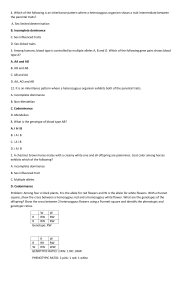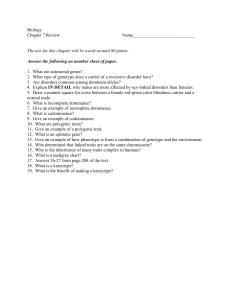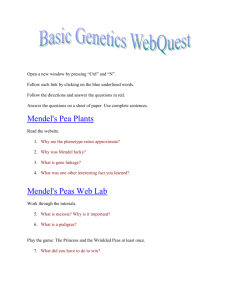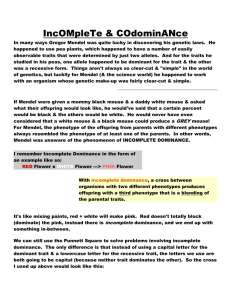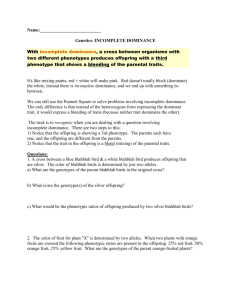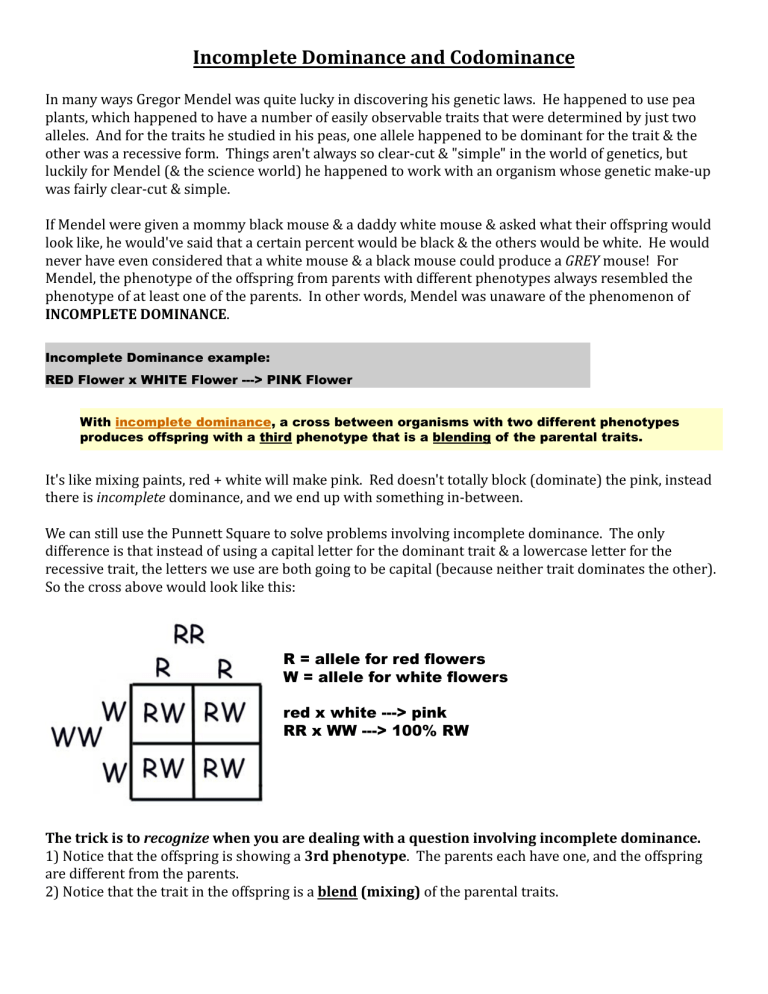
Incomplete Dominance and Codominance In many ways Gregor Mendel was quite lucky in discovering his genetic laws. He happened to use pea plants, which happened to have a number of easily observable traits that were determined by just two alleles. And for the traits he studied in his peas, one allele happened to be dominant for the trait & the other was a recessive form. Things aren't always so clear-cut & "simple" in the world of genetics, but luckily for Mendel (& the science world) he happened to work with an organism whose genetic make-up was fairly clear-cut & simple. INCOMPLETE DOMINANCE If Mendel were given a mommy black mouse & a daddy white mouse & asked what their offspring would look like, he would've said that a certain percent would be black & the others would be white. He would never have even considered that a white mouse & a black mouse could produce a GREY mouse! For Mendel, the phenotype of the offspring from parents with different phenotypes always resembled the phenotype of at least one of the parents. In other words, Mendel was unaware of the phenomenon of INCOMPLETE DOMINANCE. Incomplete Dominance example: RED Flower x WHITE Flower ---> PINK Flower With incomplete dominance, a cross between organisms with two different phenotypes produces offspring with a third phenotype that is a blending of the parental traits. It's like mixing paints, red + white will make pink. Red doesn't totally block (dominate) the pink, instead there is incomplete dominance, and we end up with something in-between. We can still use the Punnett Square to solve problems involving incomplete dominance. The only difference is that instead of using a capital letter for the dominant trait & a lowercase letter for the recessive trait, the letters we use are both going to be capital (because neither trait dominates the other). So the cross above would look like this: R = allele for red flowers W = allele for white flowers red x white ---> pink RR x WW ---> 100% RW The trick is to recognize when you are dealing with a question involving incomplete dominance. 1) Notice that the offspring is showing a 3rd phenotype. The parents each have one, and the offspring are different from the parents. 2) Notice that the trait in the offspring is a blend (mixing) of the parental traits. The meaning of the prefix "co-" is "together". Cooperate = work together. Coexist = exist together. Cohabitat = habitat together. CODOMINANCE is similar to incomplete dominance. A hybrid organism shows a third phenotype --- not the usual "dominant" one & not the "recessive" one ... but a third, different phenotype. With incomplete dominance we get a blending of the dominant & recessive traits so that the third phenotype is something in the middle (red x white = pink). But in Codominance, the "recessive" & "dominant" traits appear together in the phenotype of hybrid organisms. Codominance example: red x white ---> red & white spotted With codominance, a cross between organisms with two different phenotypes produces offspring with a third phenotype in which both of the parental traits appear together. When it comes to punnett squares & symbols, it's the same as incomplete dominance. Use capital letters for the allele symbols. My example cross from above would look like so: R = allele for red flowers W = allele for white flowers red x white ---> red & white spotted RR x WW ---> 100% RW Some texts use letters & superscripts when dealing with codominance. It looks like this: We'll use "F" for the flower color allele. FR = allele for red flowers FW = allele for white flowers red x white -------> red & white spotted flowers FRFR x FWFW ----> 100% FRFW A very common phenotype used in questions about codominance is roan fur in cattle. Cattle can be red (RR = all red hairs), white (WW = all white hairs), or roan (RW = red & white hairs together). A good example of codominance. Another example of codominance is human blood type AB, in which two types of protein ("A" & "B") appear together on the surface of blood cells.
